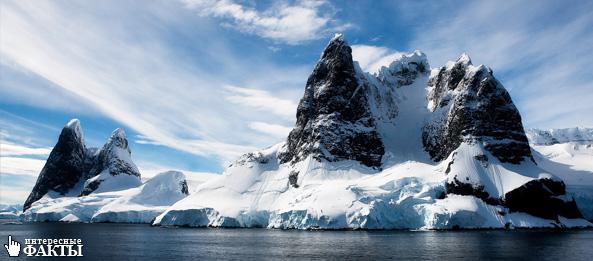976
Artika

Arctic - it's extraordinary beauty: snowy desert, ice, wild animals. The very feeling of being at the center point of the planet - the North Pole - will leave a lasting impression on any person who has visited the region.
The very first written evidence about the study of the Arctic dates from the IV. BC, when the Greek Pytheas of Marseilles sailed to Thule, which, in all probability, was located far above the Arctic Circle.
At the moment, we can say that the scientific drifting station "North Pole" for a quarter of a century have passed more than 40 thousand. Km - a distance equal to the Earth's equator.
Russia - the first and only country using the so-called drifting polar station. Each station is mounted on a drifting ice floe station complex houses in which they live and expedition members. For the first time such a relatively cheap and effective way Arctic research suggested back in 1929 Vladimir Wiese, researchers working in the Arctic and Antarctic Research Institute. Due to the existence of drifting stations Russian scientists were able to explore the Arctic year-round.
Living world
Despite the lower temperature, there is life. Forest and ice desert inhabited by polar bears, reindeer, foxes, hares, lemmings. Animals have adapted to the harsh conditions due to a thick layer of subcutaneous fat and thick fur. Typical of these places birds - partridge, white owl, guillemots, razorbills, gulls and even crows. In Arctic waters and coastal areas easy to meet walruses, seals, narwhal and beluga whales.
The interaction of these species has developed an interesting chain of supply: crustaceans - fish - birds - seals - polar bears.
And in the early 1980s on Wrangel Island and the Taimyr Peninsula, new residents. This long-haired shaggy musk ox, which is also called musk oxen - they are simultaneously similar and a bull and a sheep. In times past they lived throughout the Arctic, but in most areas it became extinct and preserved only on the islands of Greenland and Svalbard. Delivered thousands of miles by plane, they settled down in new places.
Political geography of the region is also very interesting: the fact that this vast territory lay claim immediately 5 (!) States. Among them, of course, and Russia.
Unfortunately, the interest to the North Pole and the surrounding regions is caused not great value for research, and the presence of the Arctic shelf, which, as scientists assume, lies more than 100 billion tons of oil and gas, not to mention the mineral resources. < br />
Climate
The Arctic is a very cold summer. This is the result of melting ice, absorbing almost all of the sun's energy, which is enough to heat the air. The average winter temperature is -36 ° C, and in the summer months - 0 ° C.
Contrary to public opinion, the temperature seldom drops below -40 ° C. This happens due to the influx of heat from the ocean. Minimum temperatures in the Arctic can only be achieved over the dense layers of ice and are below -50 ° C. It should be noted that, according to the testimony of scientists, 55 million years ago in the now cold region was as warm as in the tropics, and the water temperature in the Arctic Ocean was about +18 ° C!
Today the Arctic is under threat - the climate of the region is the most vulnerable in the world. When we talk about the increase in average global temperature by 2 degrees, the Arctic, this means 5 degrees, and in some places - up to 10.
Over the past 25 years the Arctic ice has dramatically changed their volume decreased, they have become much "younger" and thinner. Moreover, due to climate change are changing currents in the Arctic Ocean, and this may have an impact not just to the Arctic, but the entire planet's climate.
Desert
Desert - is not only dunes or rocks in the hot sun. Desert and snow are called Arctic. For example, the Arctic desert meets the mountains Byrranga in Taimyr and Wrangel Island. Most of the territory is covered by arctic desert glaciers and rocks, occasionally moss.
A number of researchers Arctic and adjacent areas of interest because under layers of ice and waters of the Arctic Ocean is a mountain ridge volcanoes. Particular attention is attracted scholars this fact in 1999, when seismographs recorded the strongest tremors in one of the underwater mountain ranges.
American Oceanic Institute in cooperation with an international team of researchers announced deepwater powerful explosion of the volcano, hitting this message the scientific world, because before 1999 were all convinced that this volcanic activity at such a great depth is simply impossible.
The question was, like lava, pressed down the water column, was able to break the 4-kilometer cover the earth? After the research has been recognized as the dominant version of the following: over an area of lava formed a kind of emptiness, which gradually became filled with carbon dioxide. Accumulating, gas began with great force to push inside the Earth's crust and eventually found out, escaping to the surface with magma and rock.























